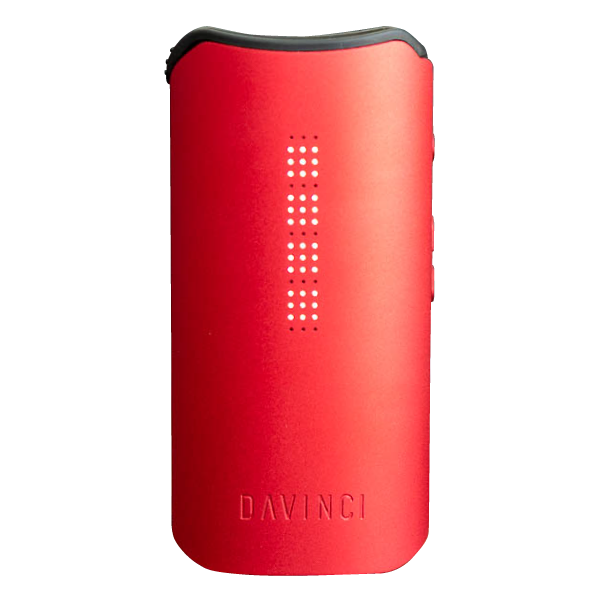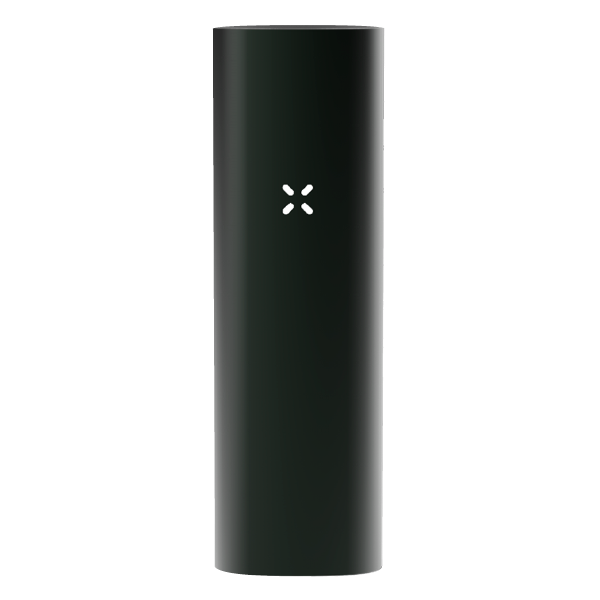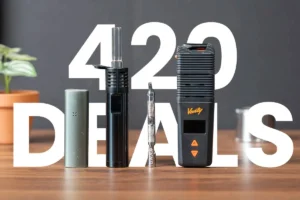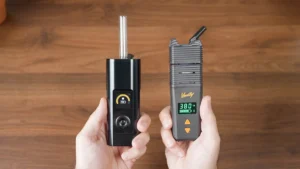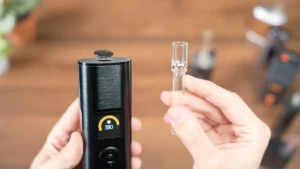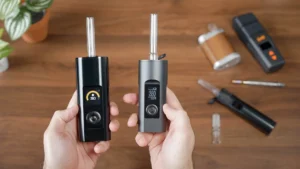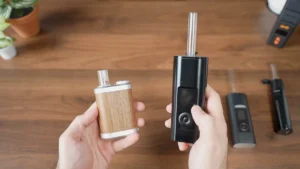Background
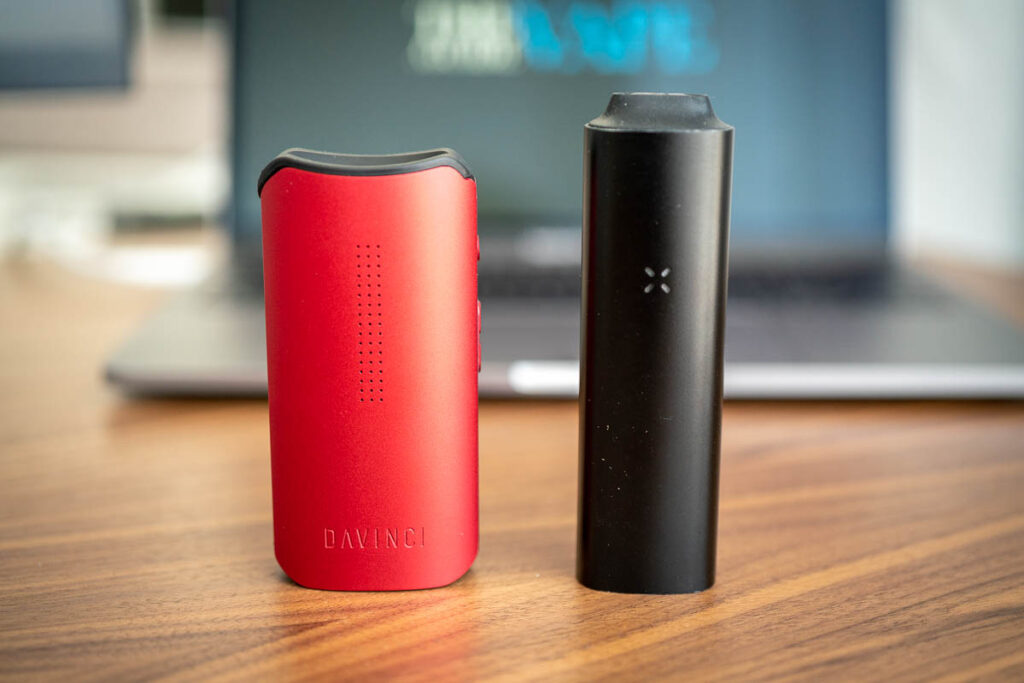
Dry herb vaporizers come in a lot of shapes and sizes, and when it comes to portables – devices are definitely getting smaller. Companies are now releasing products that strike a balance between size and performance. Smaller also doesn’t mean fewer features, and the Pax 3 (review | buy) and the DaVinci IQC (review| buy) definitely prove that. These two devices represent the current best of compact vaping – both are conduction vaporizers, compatible with their respective smartphone apps, and come with their own suite of unique features.
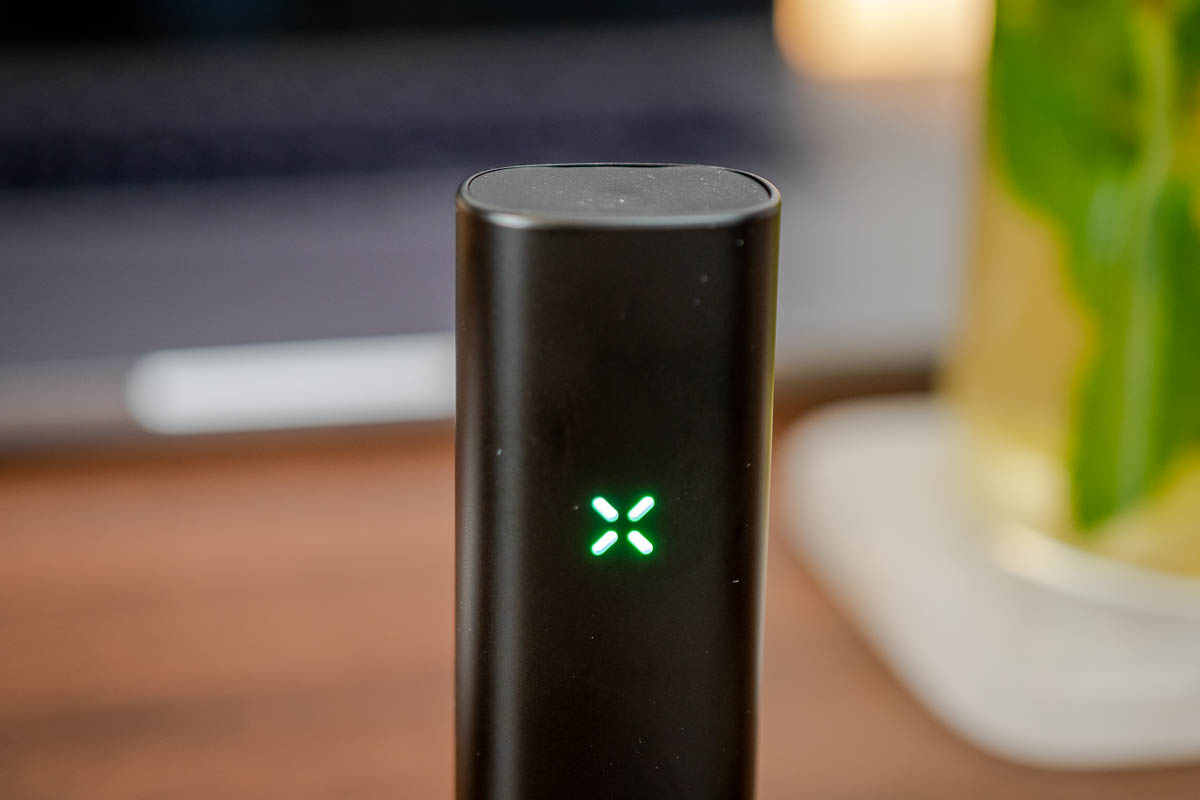
When the Pax 3 came out in 2016, it defined luxury vaping and was even called “the iPhone of vaporizers”. It stood out against the many rugged, larger devices with its sleek columnar design, and advanced features like haptic feedback, and a lip sensor. The Pax maybe wasn’t the first device to be this sleek, but it definitely was the most popular. The release of the Pax proved that there was a demand for smaller, more stylish devices, so you could say that the Pax paved the way for the creation of the device we’re pitting it against, the DaVinci IQC.

The DaVinci IQC is an updated version of the popular DaVinci IQ2 (review | buy). It sports several DaVinci signatures such as a lightweight and portable body, LED light display, zirconia pearl, and customizable smart paths. But does have a slightly more rugged look, USB-C charging, and several of the formerly zirconia pieces are now made of durable, hi- temperature silicone.
Both devices are compatible with dry herb and solid concentrates such as dab/wax, but for the purpose of this review, we’ll be focusing on their performance with dry herb. To maintain your device and improve its longevity- it’s best to keep your wax pen and dry herb vaporizer separate. To test the PAX 3 and IQC, I used them with CBD herb from In-Hemp and THC from my local dispensary.
Kit and Accessories
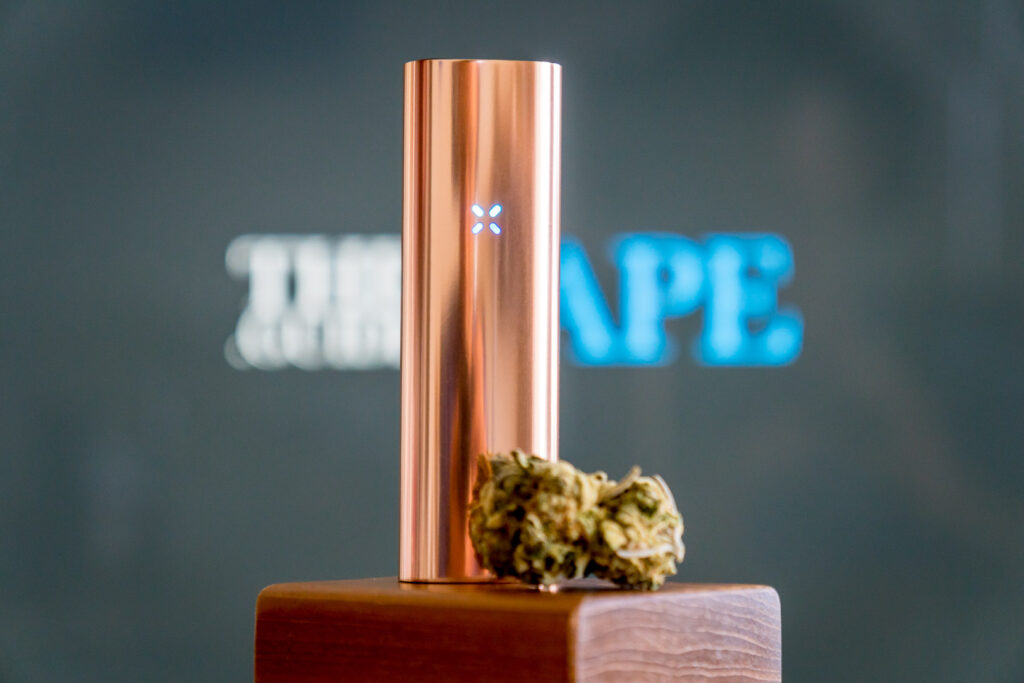
Both the Pax 3 and DaVinci IQC come with extensive kits. Although the Pax 3 does give users the option to choose a “device only” kit and a “complete kit” for $50 more. Think of the “device only” kit as somewhat of a starter pack with the bare essentials- you get the device, oven lid, 2 mouthpieces (raised and flat), a cleaning kit, and the charging dock.
With the complete kit you get the following added accessories:
- Concentrate insert- to use with extracts
- Extra lid (half oven)- allows to pack the oven with half the amount of herbs
- Multi-tool- to pack, empty, clean the oven
- 3 Replacement screens

The IQC’s kit comes with the following inclusions:

- 1x DaVinci IQC
- 1x 18650 Battery
- 2x Stickers
- 1x Users Manual
- 1x 10mm Water Adapter
- 1x Extra Pick Tool
- 3x Alcohol Wipes
- 1x Brush Tool
- 1x 3ft Braided Nylon USB To Type-C Cable
An optional (yet highly recommended accessory) are the dosage pods which can be pre-loaded with herb and stored in an accompanying holder. These pods can be popped into the oven on the go, so you don’t have to load the device manually each time.
Design and Features
The design thinking behind the DaVinci IQC and the Pax 3 are near similar. Both are columnar devices that are easily concealable in your palm and are neither loud or give clues regarding their function. They’re definitely designed to be the perfect stealthy vaporizers.
Body
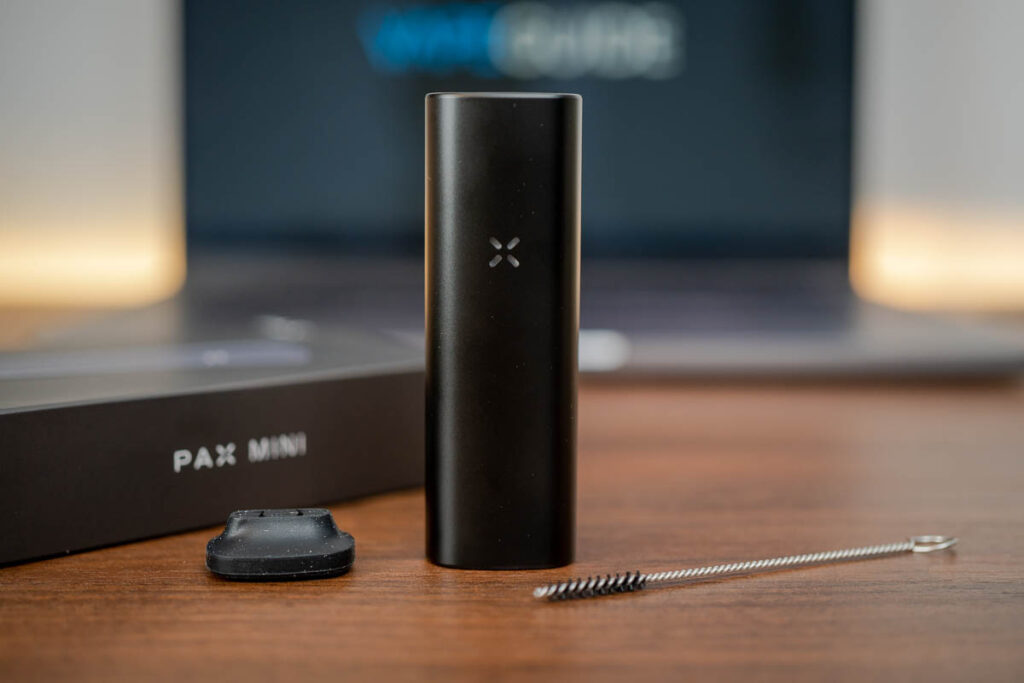
The Pax’s design has been iconic since the first Pax was released nearly a decade back. Though it has become increasingly smaller since. Though compact- it is far from fragile. The body of the device is made from anodized aluminum and available in two finishes: matte and glossy, which add to its elegant and stylish look.
The Pax 3 is made for discreet vaping. There are no visible buttons that distract you from the sleekness of the Pax 3. The only other details are the signature flower-shaped LED lights on the front and the small magnetic connectors at the back. The LED lights indicate the device temperature, battery life, and whether the device is switched on.
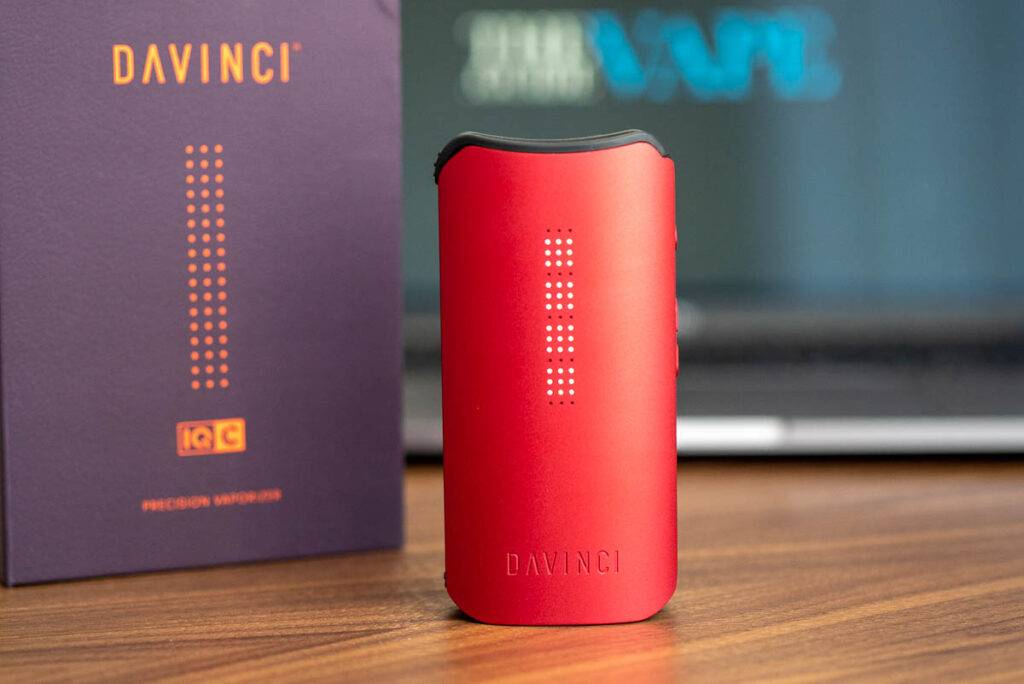
The DaVinci IQC, just like the rest of DaVinci’s product line is constructed from aluminum (the IQC is made with sandblasted aluminum), rectangular in shape with rounded edges, and can be best described as having a rugged minimalist look. Unlike its predecessor, the IQ2 which had an aluminum lid in the same color as its body – the IQC’s high-temp silicone lid now outlines the top of the device. Making it look tougher as opposed to fully sleek.
On the front of the device is the display grid with 51 individual LEDs that light up to indicate current temperature levels, device status, and battery level. On the right of the device are 3 small, yet quite tactile buttons for power, and for turning the temperature up/down, or toggling through the smart paths.
Features
The Pax 3 features lip-sensing technology which detects whether you’re taking back-to-back draws or you’re spacing out your sessions, the device then makes real-time adjustments to work most efficiently with your vaping style. It also features haptic feedback that indicates the status of your device by lightly vibrating.
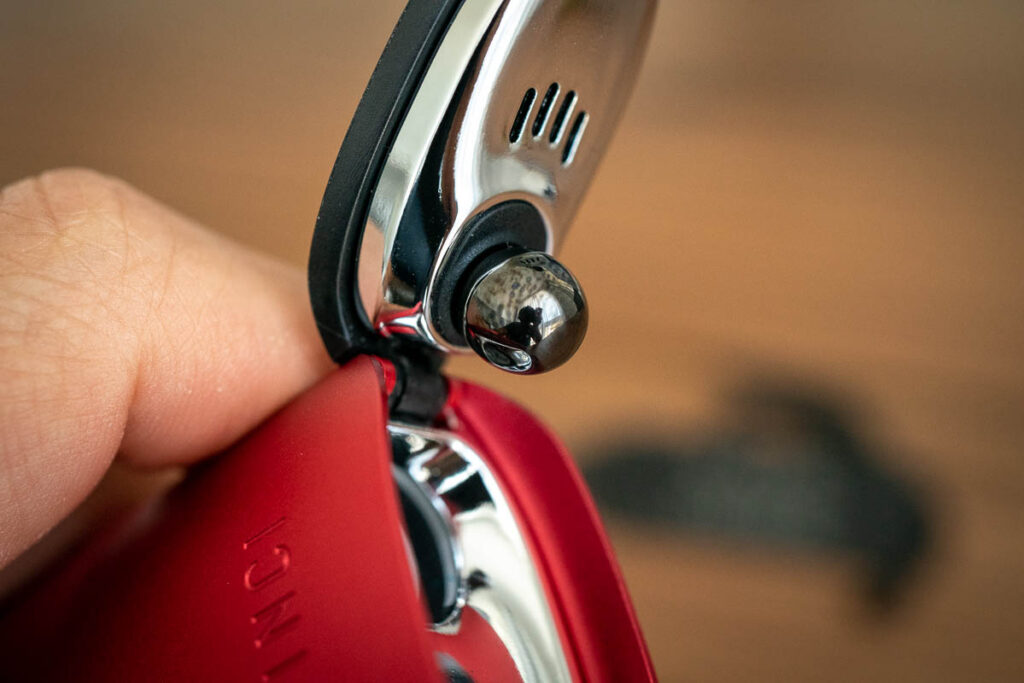
One of DaVinci’s signature features, other than the smart paths (more on that later) is the zirconia pearl. Opening the bottom of the IQC reveals both the oven and the pearl attached to the lid. The pearl serves two functional purposes: first, it secures the oven from the bottom and heats up to create a more even “burn” of the herbs. Second, it may be screwed out a bit to reduce the space in the oven, for when you want to use less herb/ microdose
Battery

The Pax 3 has a built-in 3500mAH battery which lasts roughly 8-9 sessions or 90 minutes. Instead of a USB charging port, the Pax 3 has a magnetic proprietary charger that snaps onto the back of the device. Unfortunately, this connection isn’t the strongest and gets dislodged easily- so it’ll be best to find a sturdy flat surface to leave your Pax 3 on while it charges for 2 hours.
The IQC is powered by a replaceable 18650 battery which lasts for about an hour of continuous use or 6-8 sessions. The charging port on the IQC has been upgraded to USB -C from micro-USB, and though USB-C is more stable and charges faster, it still takes 2 hours to fully charge the battery. I highly recommend purchasing a spare battery (buy on Amazon) and charger (buy on Amazon) so you can swap out the drained battery for a charged one at any time.
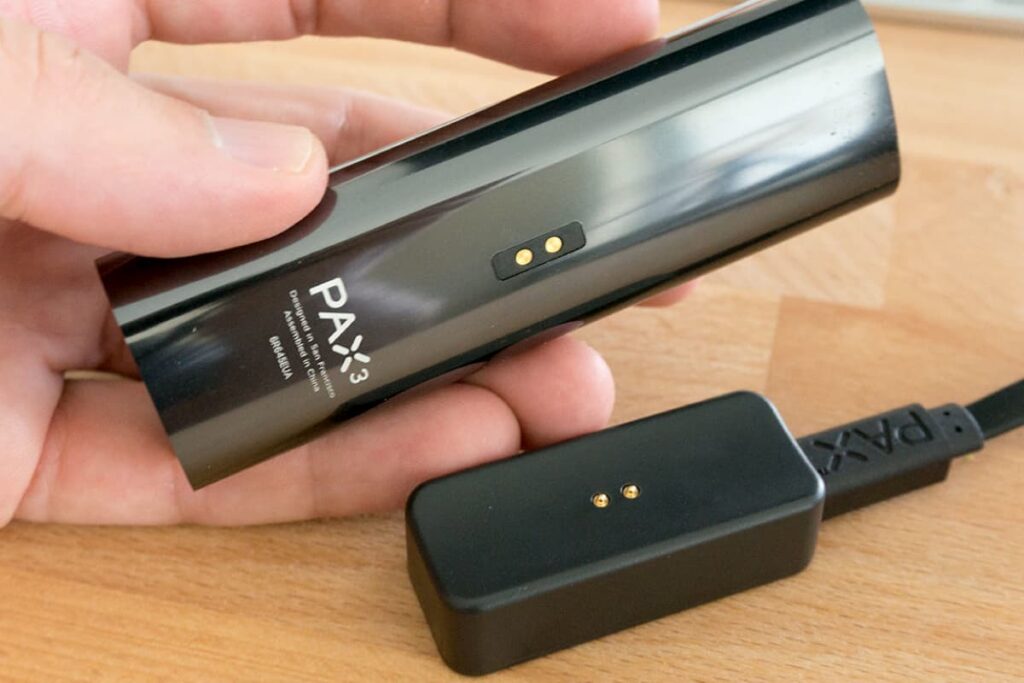
While the Pax 3’s battery lasts longer on a single charge, it’s definitely more convenient to swap out a dead battery for a fully charged one. Proprietary chargers can also be a little inconvenient since once you’re out of power, there’s no way to get the Pax 3 going again. So, as far as batteries are concerned. The IQC definitely has a better one.
Mouthpiece

Both devices come with functionally the same types of silicone mouthpiece options in their kits – they just differ in form. One is a flat mouthpiece that sits flush at the top of the device. Either will feel quite awkward to use at first, but both device mouthpieces differ in lip placement. On Pax 3, the opening is on the side of the device- meaning your lip will be touching a portion of the device body’s surface. While on the IQC, your lips remain on top and the draw feels a bit more natural.
The second mouthpiece that comes with the Pax 3 is a slightly raised yet flat-topped mouthpiece. This is a much better and more sanitary mouthpiece to use with your Pax and actually feels more natural to draw from. The Pax, due to its size- tends to get quite warm, so using the flush piece and having your lip touch the side might be uncomfortable after several sessions.
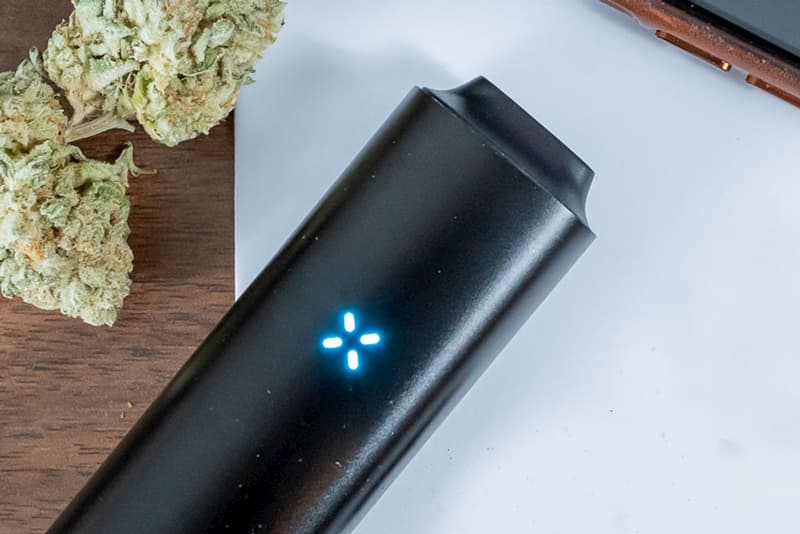
The “straw-style” mouthpiece on the IQC is also the better one in my opinion. It extends the length of the airpath, further cooling the vapor and allows you to take a more natural, lighter draw. This mouthpiece can also be used as an adapter to any 10mm glass rig.
Smartphone App
Smartphone compatibility in vaporizers is relatively new, and both the DaVinci smartphone app and the Pax apps allow you to configure and fully customize your sessions to your liking. The differentiator however is that since the Pax 3 doesn’t exactly have a traditional button interface, the Pax 3’s temperature settings and modes are fully controllable and customizable via the app.
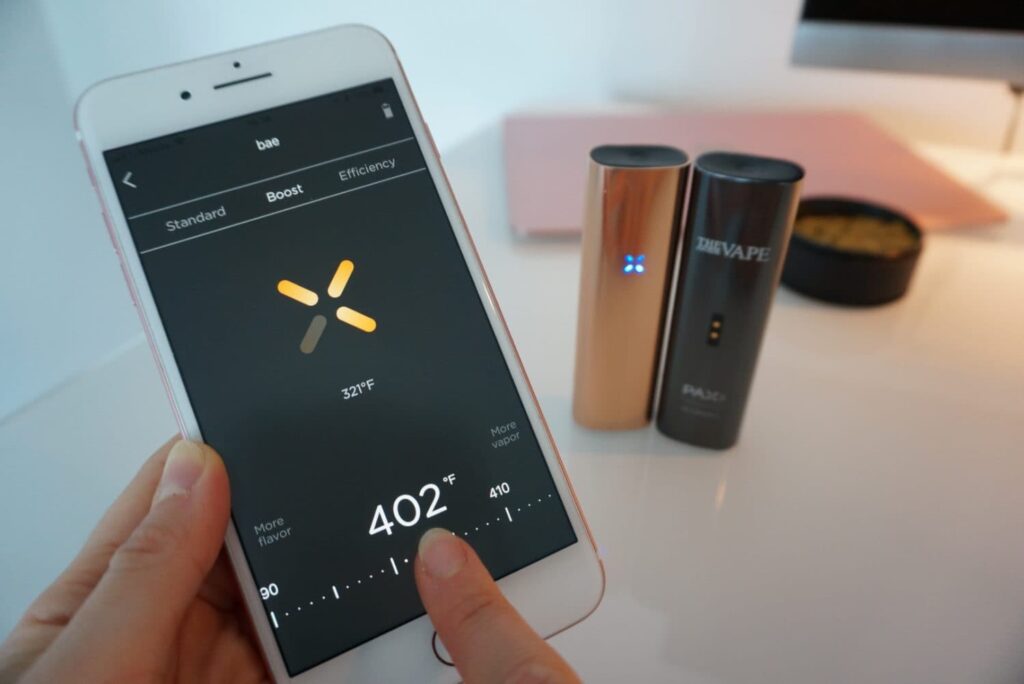
- Standard Mode — increases oven temperature when your lips are detected on the mouthpiece and auto-cools when the device hasn’t been used for 20 seconds.
- Boost Mode — the temperature rises quickly and comes down just as fast, this is for quick and easy sessions
- Flavor Mode — heats and cools down quickly to maximize flavor and produce more vapor on demand
- Stealth Mode – made for low-profile vaping and speeds up cool-down time. This mode also dims the LED petals and puts the PAX 3 into standby mode within 15 seconds of non-use.
- Efficiency Mode — the oven temperature increases by 1° every two seconds. Great for saving battery life.
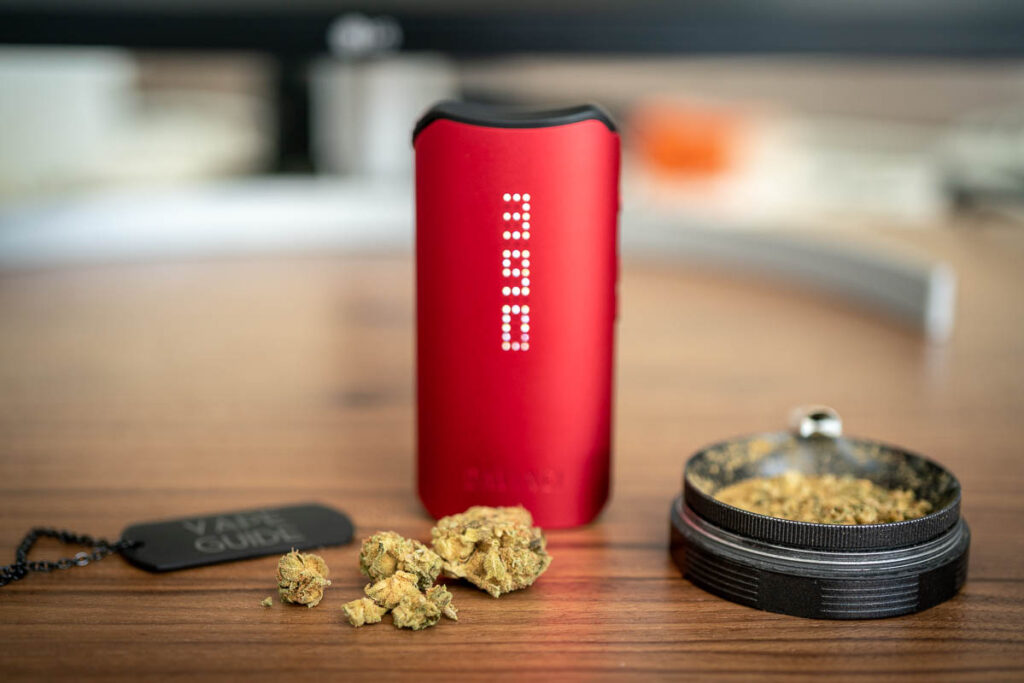
Since the IQC does have buttons, you can use the device independently from the app and press the +/- buttons to toggle through the smart paths or click the power button once to use the device in precision mode. Precision mode allows you to set the temperature to the degree and the precise temperature will be displayed on the LED grid.
Smart Paths are a DaVinci feature that gradually increases the oven temperature during your session ( this lasts 8 minutes). This is where the DaVinci app comes in – you may opt to change the preset temperatures on each mode. But by default, the temperature settings are as follows:
- Mode 1: starts at 350F and increases to 370F
- Mode 2: starts at 370F and increases to 390F
- Mode 3- starts at 390 and increases to 410F
- Mode 4: starts at 410 and increases to 430F
Performance and Vapor Quality
Regardless of how feature-filled a device is, it’ll always come down to how well it performs and how good the vapor quality is. Both the IQC and the Pax 3 are conduction vaporizers – meaning it heats the herb via direct contact. It’s worth noting that there’s a significant age gap between these two vaporizers and their performance is indicative of how much conduction heating technology has improved since the Pax 3 was released in 2016.
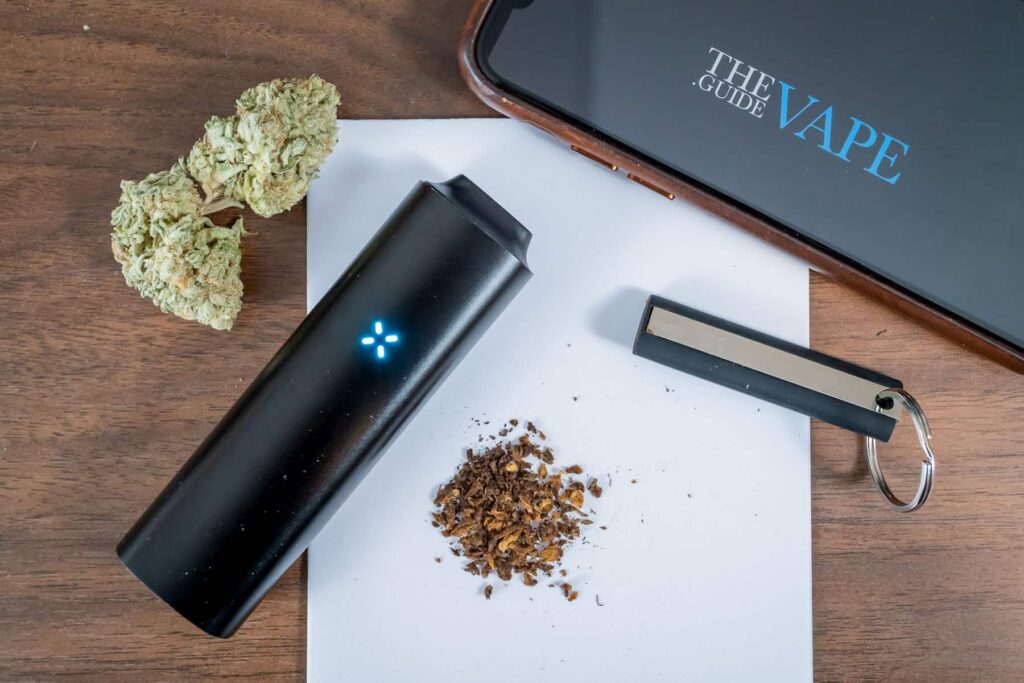
Pax 3
For a device this small, the Pax 3 does pretty well. It takes 20-30 seconds to heat up, and while it’s climbing to temperature- you’ll actually feel it get a bit warm in your hands as it does. It's not exactly crazy hot, but it’s a bit uncomfortable especially on the higher end of its 355-420°F temperature range.
Vapor production on the Pax is surprisingly good, the flavor and density are well balanced especially on the first draw. But deeper into the session, it succumbs to its small size and begins to get too warm for my liking. This may be eased by holding the Pax at its center, but it’s not exactly too cool there either. Overall, the vapor is smooth, dense, and well-flavored for the first 2-3 draws and afterward becomes warm and less flavored.
DaVinci IQC

The IQC has the same cone-shaped oven as its predecessor, making it easier to load. For an even better loading experience, I highly recommend the use of an herb spoon. It takes a little longer to heat than the Pax, taking roughly 40-50 seconds, but it does have a wider temperature range of 250-430°F. This range is pretty good especially for those who like to vape at lower temperatures.
Since it is also a small device you’d expect the vapor to be warm like the Pax. But the IQC’s sealed zirconia vapor path does a really good job of cooling down the vapor. The IQC’s vapor was clean, flavorful, and surprisingly dense for a conduction vaporizer. This is mostly due to the zirconia pearl that helps regulate oven temperature and provides a good even vape to the herb.
Bottom Line

The IQC was released in July 2021, making it the newest in its class – while the Pax 3 is a classic. The Pax 3 is 5 years older than the IQC, and at its release was the most advanced vaporizer on the market. Not to say that the Pax 3 is archaic, but since then, there has been a lot that’s improved in technology, materials, and design. The DaVinci IQC has taken advantage of all that- and it costs less than the Pax. The Pax 3 costs $199 for the basic kit and $249 for the complete kit, while the DaVinci IQC costs $229
If you had to choose between both- no question the one to get would be the device that built on all those improvements- the DaVinci IQC. The IQC delivers flavorful and dense vapor and the entire device stays relatively cool in your hand regardless of how deep into a session you are. It currently is one of the best on the market and from the looks of it – might stay that way for a while. But if you’re still on the fence, there are devices on our list of the best dry herb vaporizers 2024 that are worth checking out.
